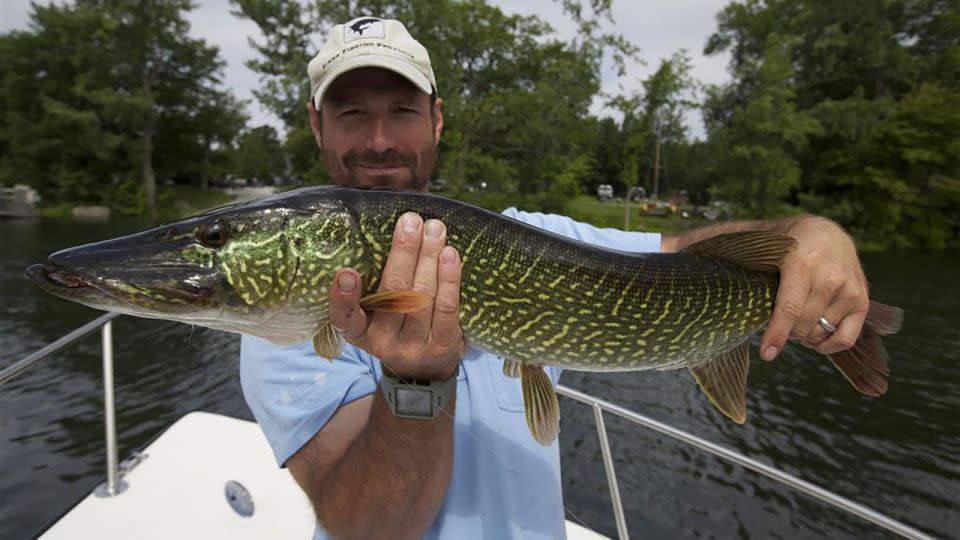The bears that scientists shot in the Canadian Arctic in 2016 were a biological mystery. He looked like a grizzly bear, complete with long claws and a prominent snout, but most of his fur was white.
Call it a pizzly or maybe a grolar beer. Whatever the case, scientists have determined that the animal was the rare offspring of a polar bear that mated with a grizzly bear, and as the Arctic melts and polar bears increasingly move on land, sightings of these hybrids are increasing.
Pizzly bears aren’t born en masse, says Charlotte Lindqvist, a professor of biology at the University at Buffalo, whose lab focuses on evolutionary genetics. The stories about the bears are largely anecdotal and it is unclear how widespread the phenomenon is.
For example, eight of the bear hybrids turned out to be the offspring of a certain female polar bear with an apparent predilection for male grizzly bears.
But as global temperatures rise and Arctic ice melts, polar bears will have more opportunities to encounter and mate with other bear species.
“This may just be the beginning,” Lindqvist told CNN. “The pressure is on and we can clearly see that polar bears in certain areas are spending more time on land as the sea ice is disappearing. Brown and black bears are increasingly invading Arctic habitats. And I think that will only expand.”
Gene exchange between bears and other animals and plants (and people) has been happening for centuries. Lindqvist’s research found evidence of gene flow between polar bears and brown bears as early as 150,000 years ago, suggesting the species came into contact during earlier, natural changes in climate. Scientists are also studying possible hybridization between arctic foxes, a cold-acclimatized northern species, and the red fox.
But the main thing Lindqvist and other scientists are looking forward to is the extent to which this current period of human-induced warming – by far the fastest in tens of millions of years – will bring species into contact with each other.
Hybridization can be a good thing in some cases because it helps species adapt to a rapidly warming planet, says Daniel Rubinoff, professor of entomology and director of the University of Hawaii Insect Museum.
For others, it could mean the end of the line.
“It doesn’t mean that a particular hybridization isn’t natural, or even something that has been happening for centuries,” Rubinoff told CNN. “But the problem is that it’s too much, too fast. This is not good, and climate change will not help our planet’s biodiversity or ecosystems overall.”
An unusual fish
The hybrid first appeared in Vermont lakes around 2009 or 2010, state fisheries biologist Shawn Good estimates.
The long, tubular fish is the unintended offspring of two different species; it has a combination of the greenish-yellow patterns of a pike and black scales that resemble chains – a characteristic of a chain pickerel.
Good realized that the species had unknowingly mated, and that the culprit behind the genetic confusion was Vermont’s warming winters and springs.
Northern pike begin spawning in early April when water temperatures hover between the high 30s and low 40s, while the chain pickerel typically appears a few weeks later as the water warms. But spring warmth arrives earlier in the swampy areas where both species disperse their eggs and milt, leading to accidental hybridization.

The hybrid fish have become common in Vermont lakes and are regularly caught by fishermen and state scientists. Good estimates, he sees dozens a year.
Another troublesome sign for the fish: the hybrids are sterile and cannot reproduce themselves. Well said, the autopsies performed on the fish show that their reproductive organs are not yet fully developed.
That doesn’t mean there’s any danger to the unintended parents of hybrids. There are still enough pike and pickerel breeding together to keep fishing lines strong; Currently, fish hybridization occurs at the end of the pike spawning season and at the beginning of pike mating.
But Good is aware that this could change.
“There is a real possibility that these types of hybrids will increase in abundance and number as our spring temperature regimes change over time,” Good said. “If it warms up faster, these fish, which are normally separated by a few weeks and a few degrees, can spawn in a much shorter time.”
In many of these cases, Rubinoff says, cold-adapted animals like polar bears, arctic foxes and pike are seeing more and more animals encroaching on their territories in warm weather.
“In these cases, I think there will be a loser,” Rubinoff said. “In most of these cases, I suspect it will be the cold-adapted species.”
Losing their habitat
Not all scientists agree that climate change is accelerating the hybridization of species. Some argue that the other major factor – contributing to both hybridization and species extinction – is habitat loss as human development encroaches on the natural world.
“I will oppose the idea that hybridization between animals or plants or fungi or whatever is increasing in frequency right now because of climate change,” said Michael Arnold, a professor of genetics at the University of Georgia. “Climate change will cause certain habitats to be lost. But those habitats can be reclaimed if we don’t build cities on top of them.”
Arnold, like other scientists, believes that the current extinction rate is exponentially greater than in the past. Habitat loss is one of the leading causes, but climate change is accelerating, Rubinoff argued.
“The idea is that this has always happened. It’s the pace that’s faster,” Rubinoff said. “It’s like people saying extinction has always happened. That’s right, but it’s never been this fast. That’s what disintegrates ecosystems; they can handle some change, but you can’t just ramp it up.”
For more CNN news and newsletters, create an account at CNN.com